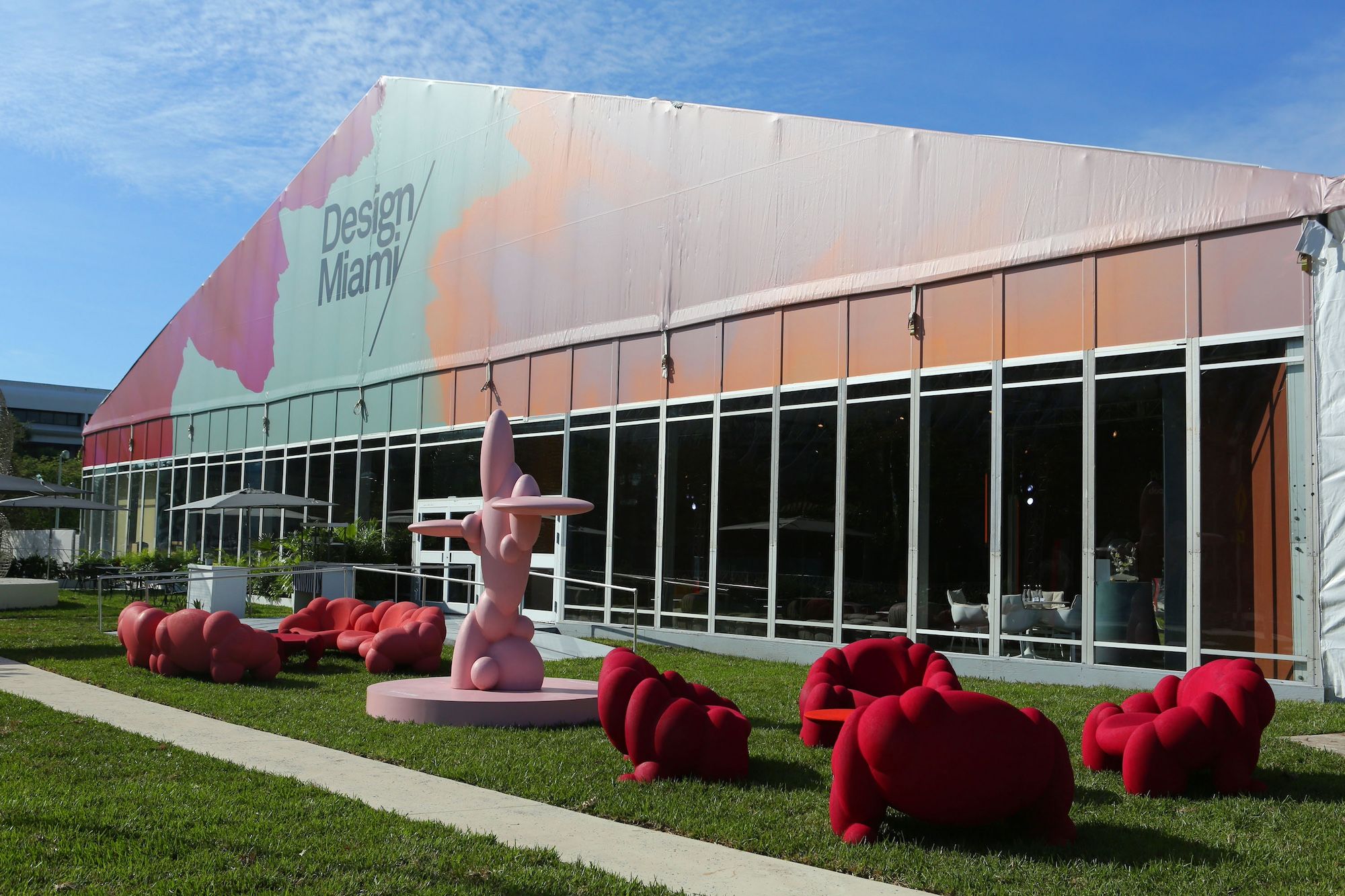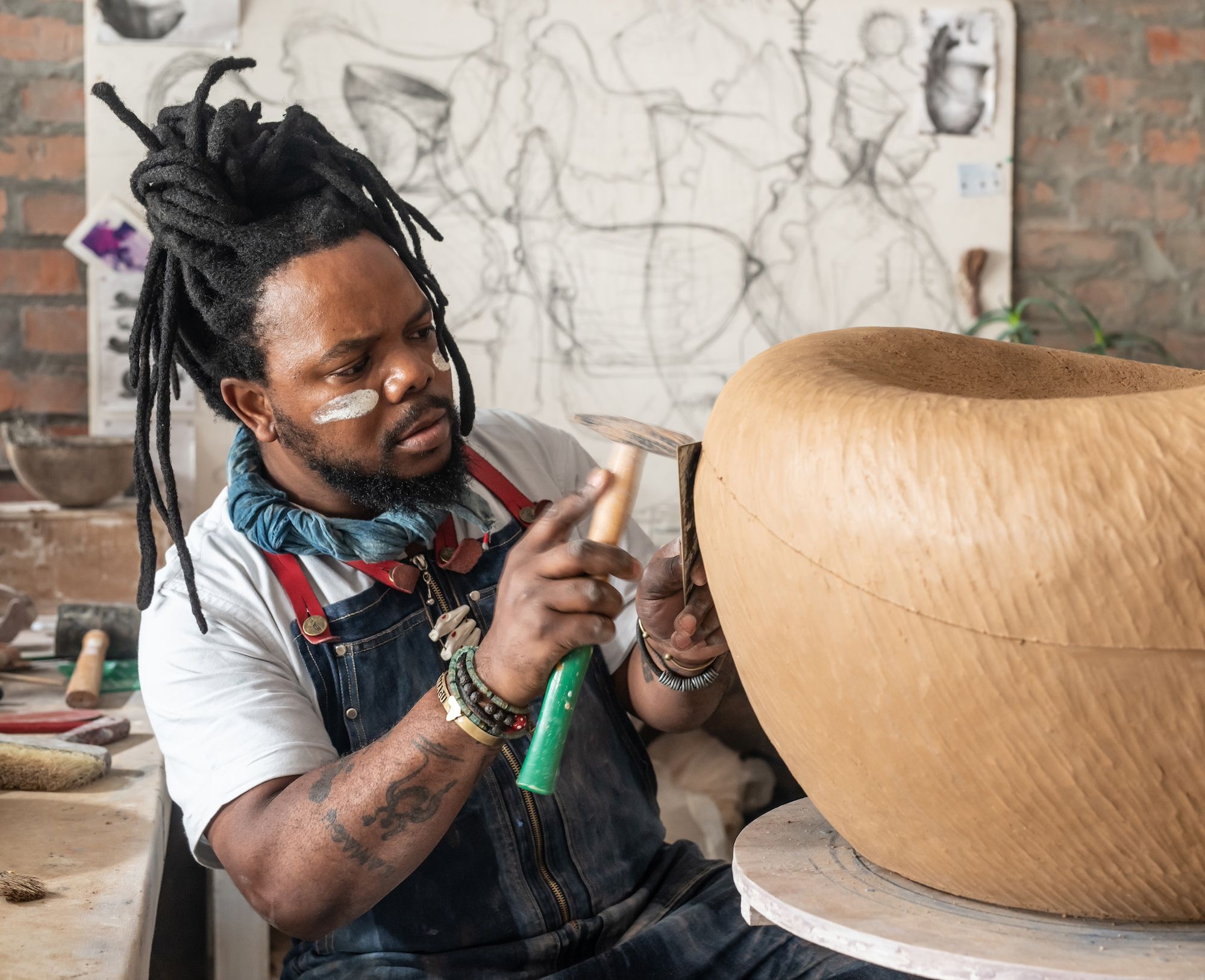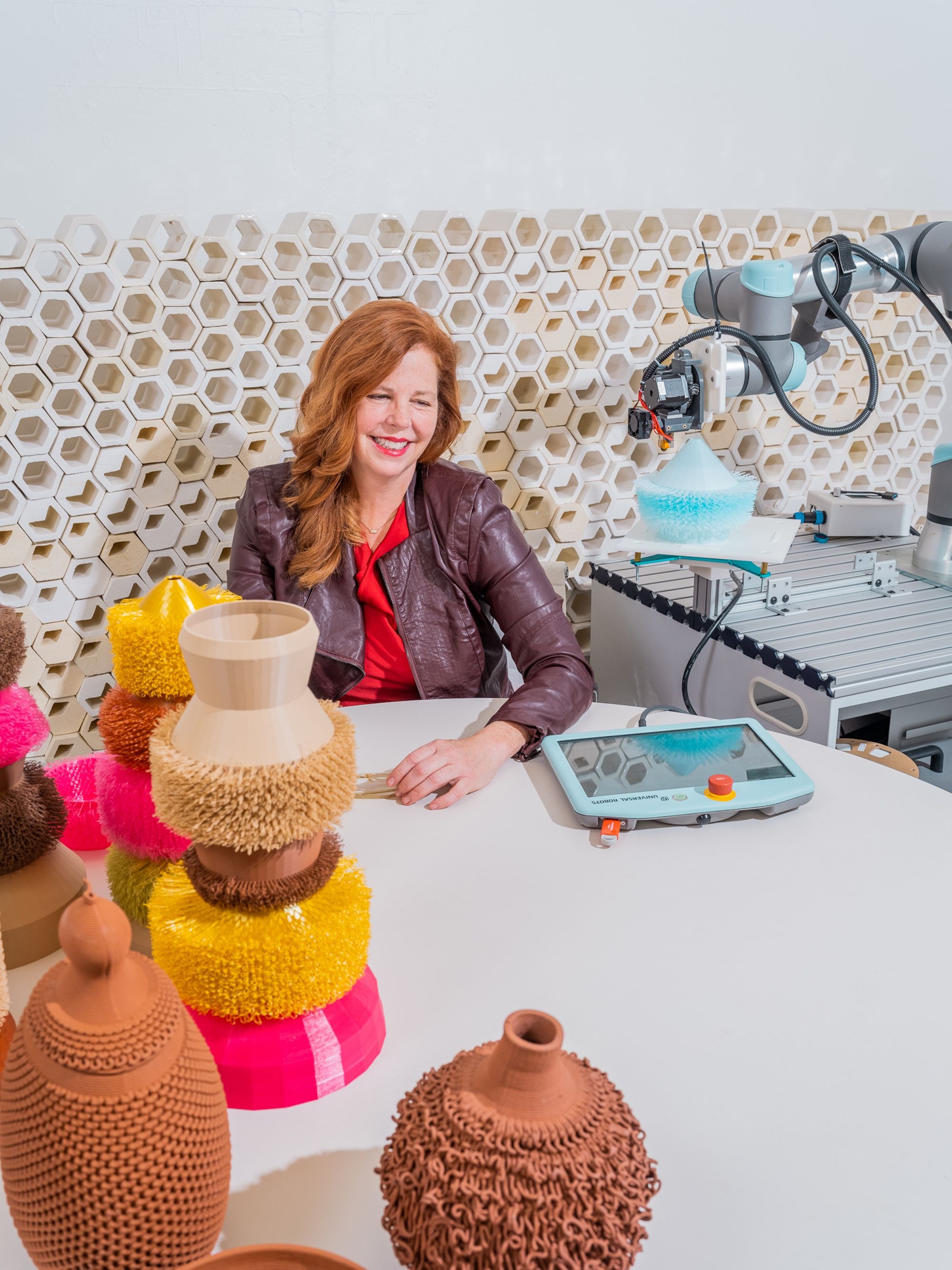SPOTLIGHT: WHERE WE STAND DECEMBER 4 2023
by Anna Carnick
The Brooklyn artist, designer, and community builder on honoring and uplifting the Black community
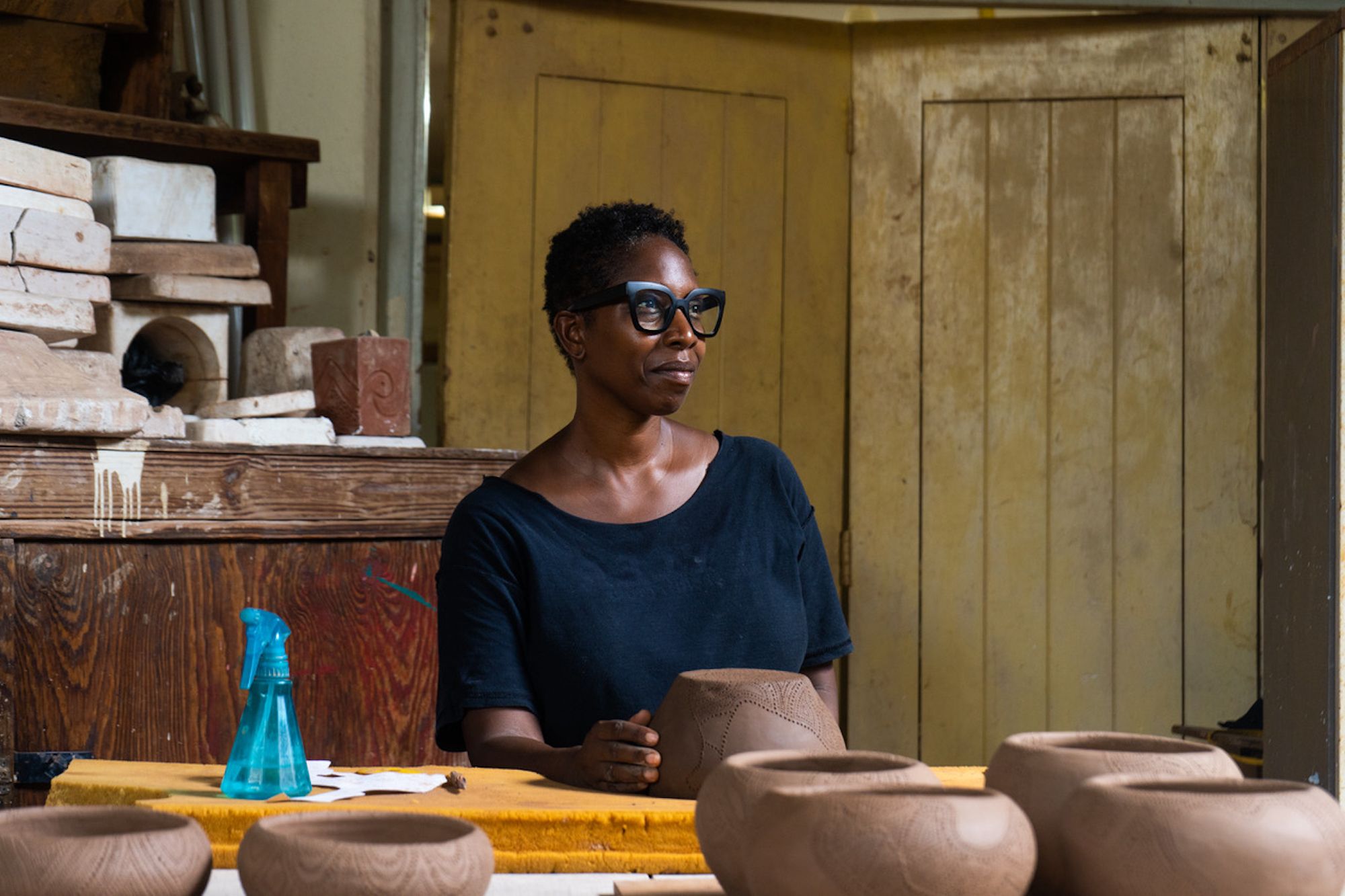
MALENE DJENABA BARNETT/ AT WORK IN HER STUDIO AT EDNA MANLEY SCHOOL OF VISUAL AND PERFORMING ARTS
Photo courtesy of the artist and Wexler Gallery
To augment the Design Miami/ 2023 curatorial theme Where We Stand, we’ve put together an editorial miniseries featuring interviews with exceptional creatives whose practices exemplify future-facing, socially engaged, and narrative-driven design approaches. These thought-provoking design thinkers all have works on view in the upcoming fair and, for this series, have responded to our queries with edifying insights into design’s role in strengthening our connections with one another—something the world could use a lot more of right about now.
“If we can design objects and spaces to change how a community feels, we can redesign our thought processes to create equity, inclusivity, and more accessibility to design.”
— Malene Djenaba Barnett
Today, we bring you our interview with artist, textile designer, and community builder Malene Djenaba Barnett. The widely revered Brooklyn-based multitalent harnesses the storytelling power of art and design to honor, reclaim, and reimagine narratives centered around the Black diaspora. Barnett shares her own African Caribbean heritage through her work—often focusing on ceramic installations—all the while venerating ancestral legacies and creating new opportunities to celebrate Black creativity and culture. She is, as well, the founder of the Black Artists + Designers Guild (BADG), a collective of independent Black makers dedicated to making the creative industries more equitable and inclusive. Her work is represented by Wexler Gallery.
Barnett is a recent grantee of a Fulbright to Jamaica, an award that resulted in her latest body of work, which debuts this week at Design Miami/ 2023. These gorgeously crafted, deliciously textured and patterned ceramics showcase Barnett’s aptitude for creating poetic artifacts imbued with multidimensional reflections of human experience. Scroll on for her thoughts on some of the questions animating the Design Miami/ 2023 Where We Stand theme.
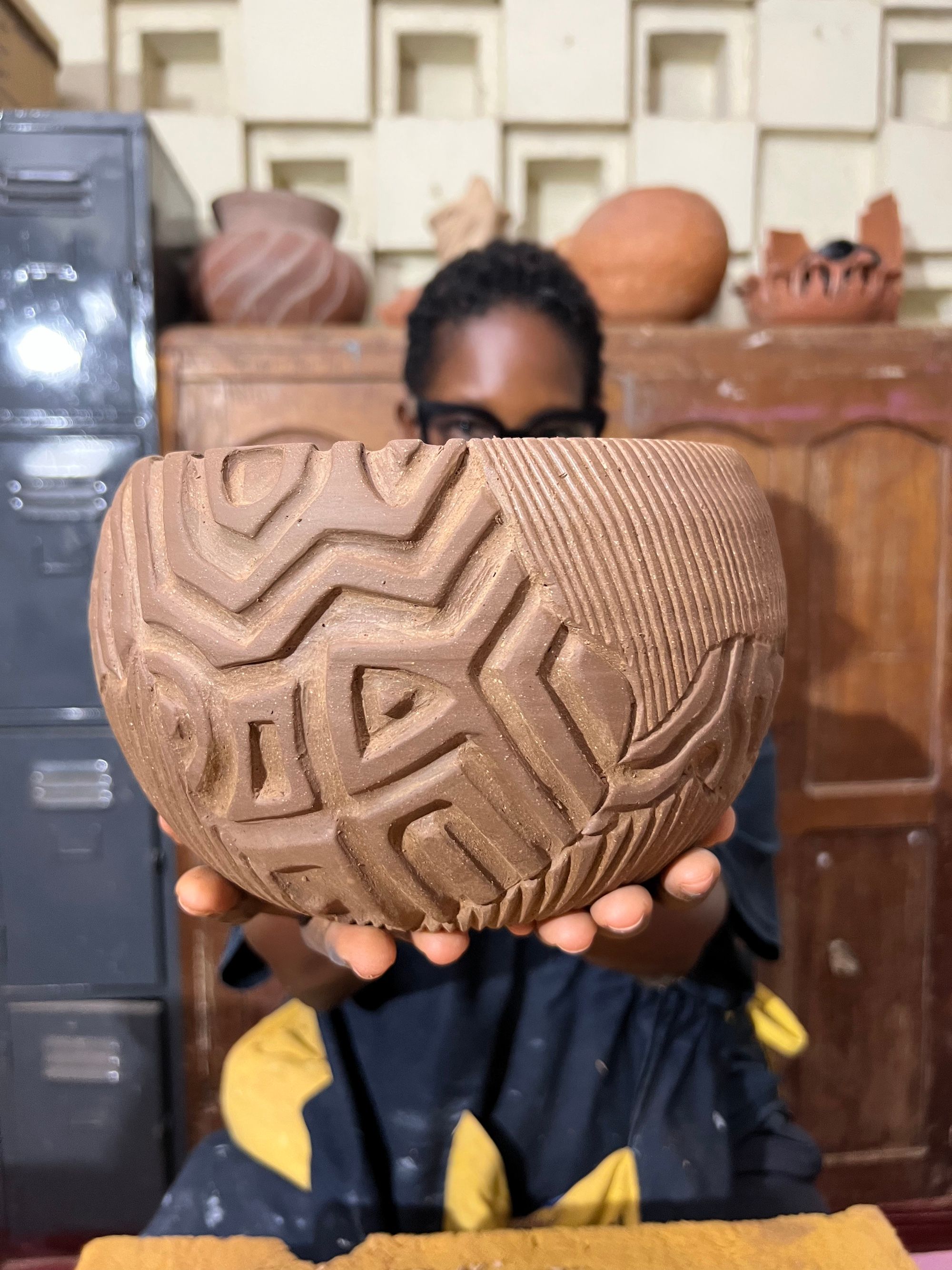
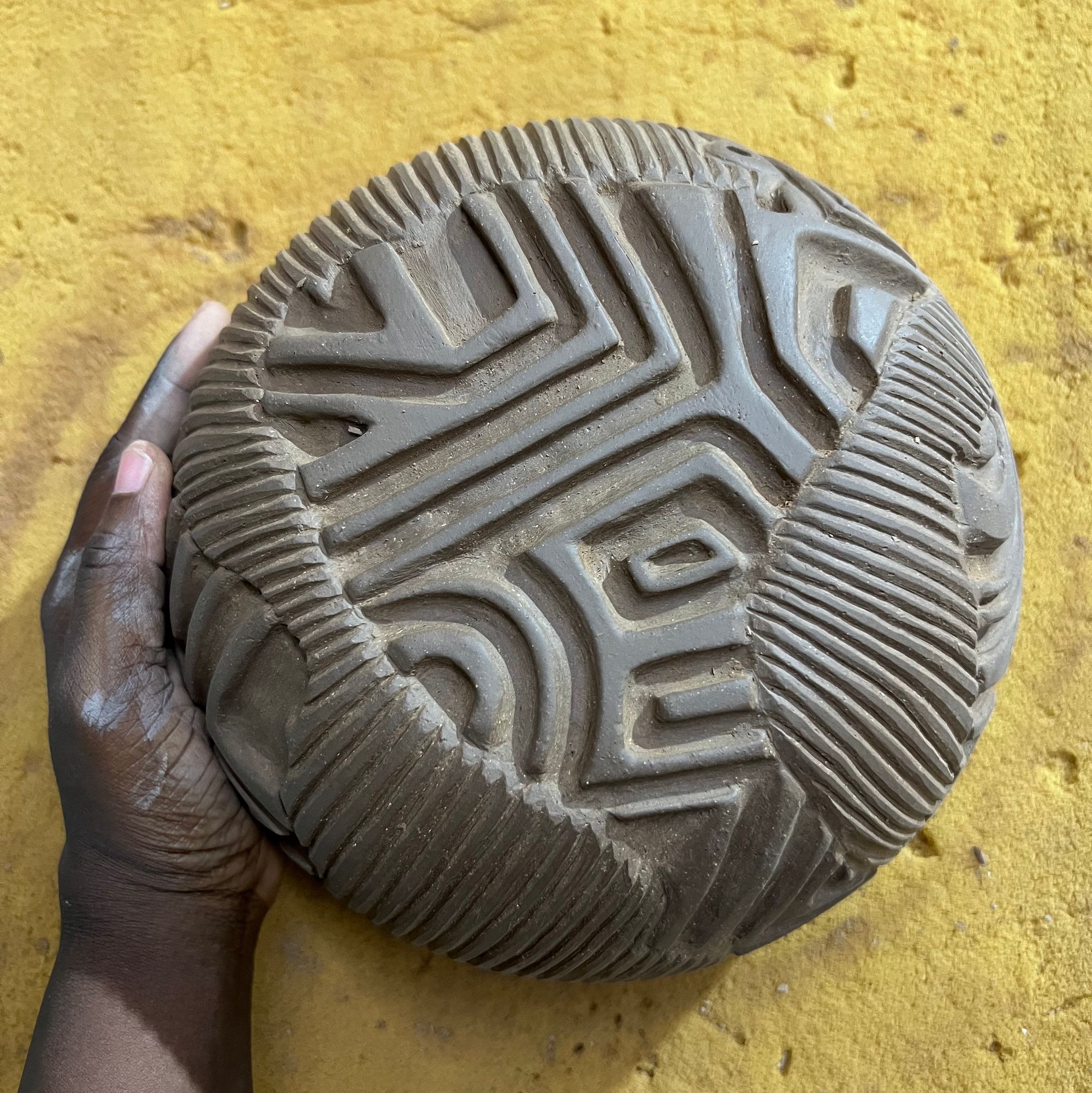
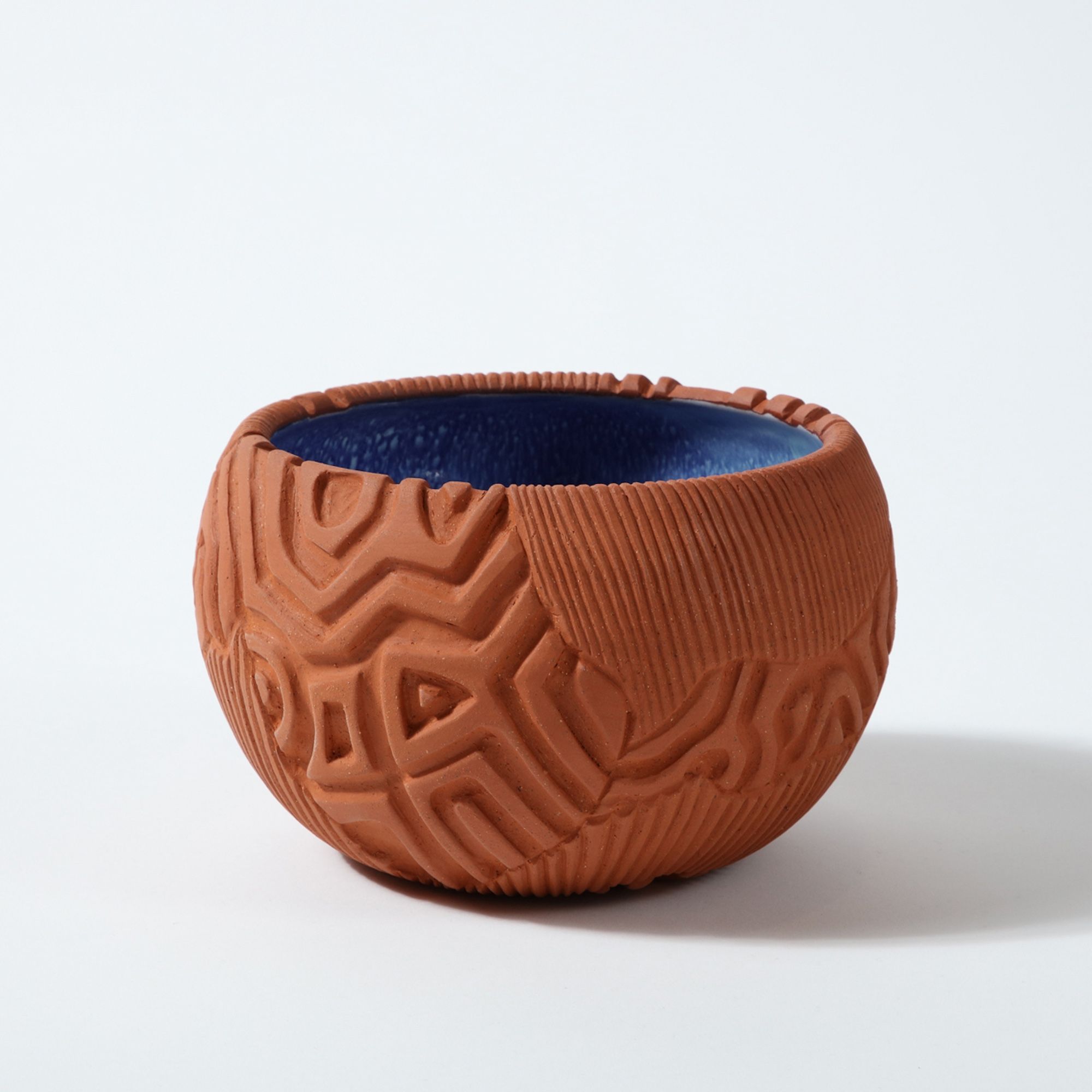
MALENE DJENABA BARNETT/ YABBA III, 2023, DEBUTING AT DESIGN MIAMI/ 2023
Photos courtesy of the artist and Wexler Gallery
Anna Carnick/Tell us about the role that storytelling plays in your practice.
Malene Djenaba Barnett/Storytelling is essential to my studio practice. My practice is multidisciplinary, clay-focused, and centered on Pan-Africanism, unearthing Caribbean diaspora craft narratives that form a cultural synergy with African-American craft experiences. This approach allows my work to act as a bridge to changing the perception and storytelling around art, craft, and design in the Black diaspora. Each object or pattern I create blurs the lines between disciplines, emphasizing the synergies between each art form and how they work harmoniously. Community building is another part of my practice for storytelling, where the work pays homage to the ancestors—advocating for Black craftspeople, exploring Caribbean migration histories, and reimagining Black diasporic archival practices.
In addition, I use storytelling to reimagine the absences in Black archives and create beautiful objects holding joyful memories from ancestral pottery and textile traditions brought to the Americas and the Caribbean from West Africa. In each repetitive process and imagery, my work gives voice to the diversity of the diaspora, connecting West African origins to the Caribbean and the Americas to foster new futures.
Black women have a legacy of storytelling, and what they make inspires the world, and my work continues to build from that legacy.
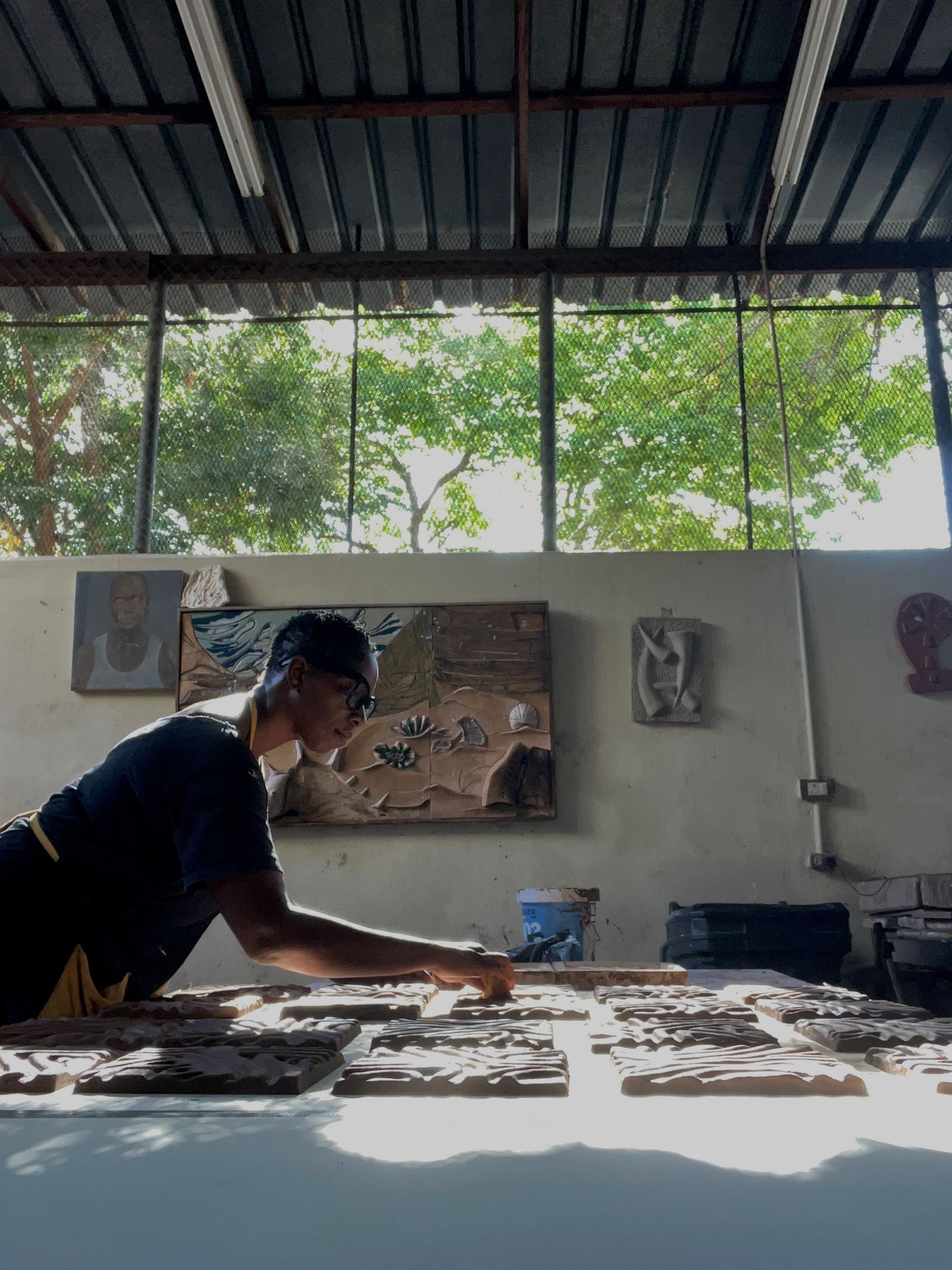
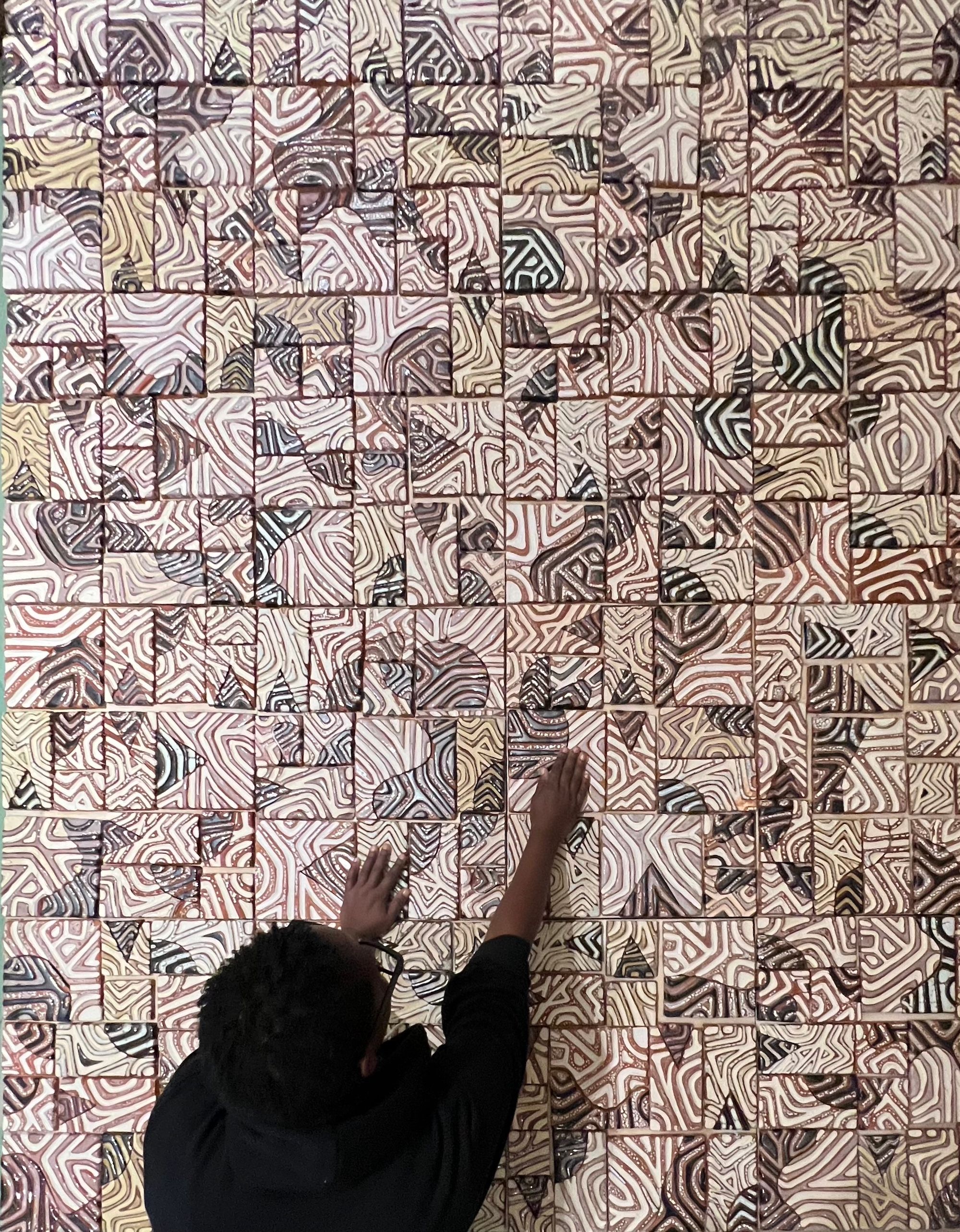
MALENE DJENABA BARNETT/ MEMORIES OF HOME, 2023, DEBUTING AT DESIGN MIAMI/ 2023
Photos courtesy of the artist and Wexler Gallery
AC/How can design be a tool for positive social change?
MDB/More than ever, design needs to be used to create equitable and inclusive futures. We must stay curious with a desire to learn not only about ourselves but also about others, share origin stories, resources, and experiences, and keep this mindset on repeat, with the understanding that there is no endpoint. If we can design objects and spaces to change how a community feels, we can redesign our thought processes to create equity, inclusivity, and more accessibility to design. We need a consistent funnel of radical financial investments to implement these changes, understanding it will take multiple generations to see the progress.
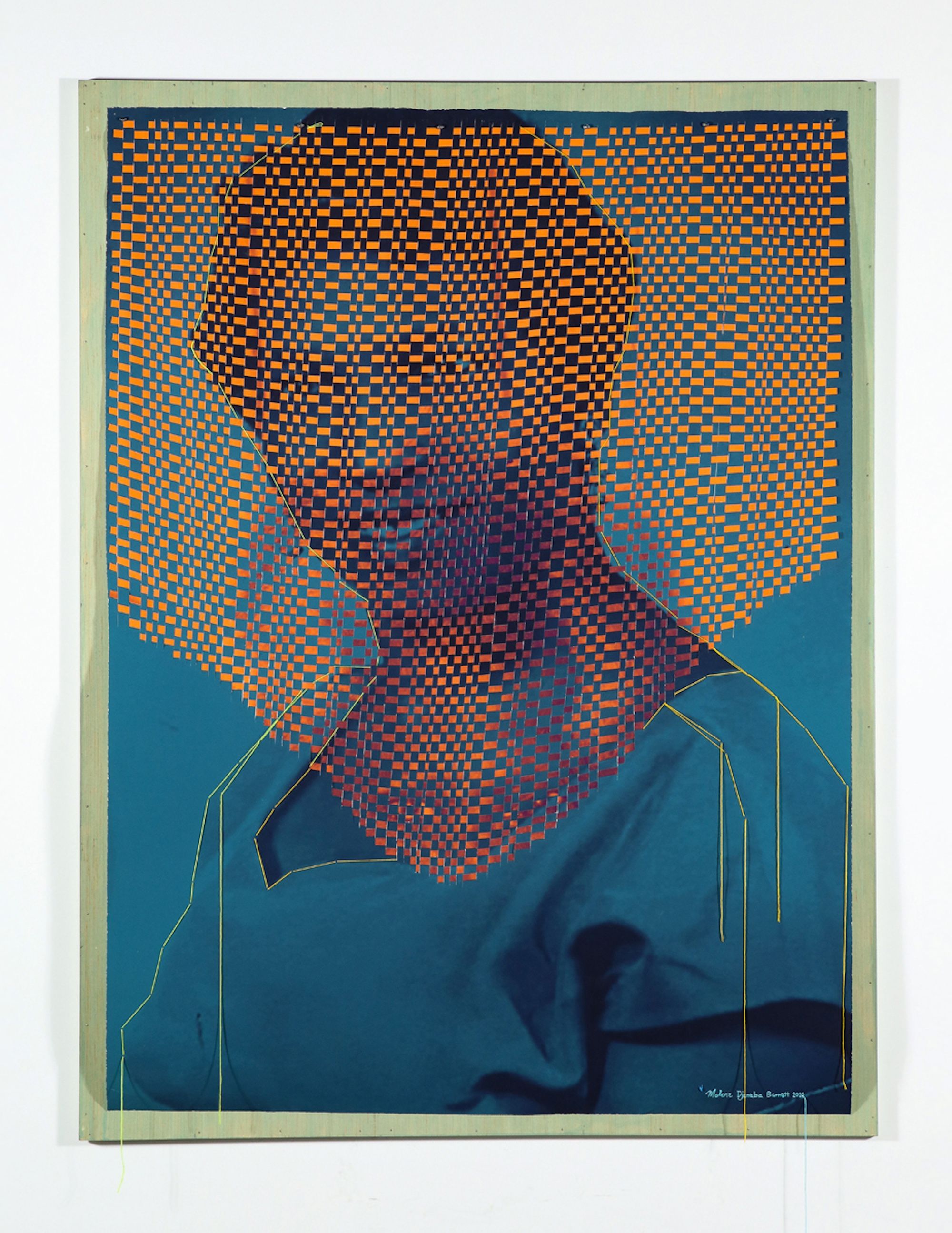

MALENE DJENABA BARNETT/ MOM’S SMILE, GRANNY’S EYES II, 2023, DEBUTING AT DESIGN MIAMI/ 2023
Photos courtesy of the artist and Wexler Gallery
AC/What changes are most urgently needed in the way design is practiced today?
MDB/Design needs to be equitable and inclusive. We must have a broader lens around what design looks like, who practices design, and a better understanding of the history of design. The ways we learn about design, from midpoints of history instead of from the origin until now, create an imbalance of who is revered and a community educated with curated stories of half-truths. A radical investment in Black designers and organizations is needed to build equity. Because of centuries of oppression, the starting point has never been equitable for Black makers. Because of this, I started the Black Artists & Designers Guild five years ago to build equity by advancing a community of Black makers to address this issue.
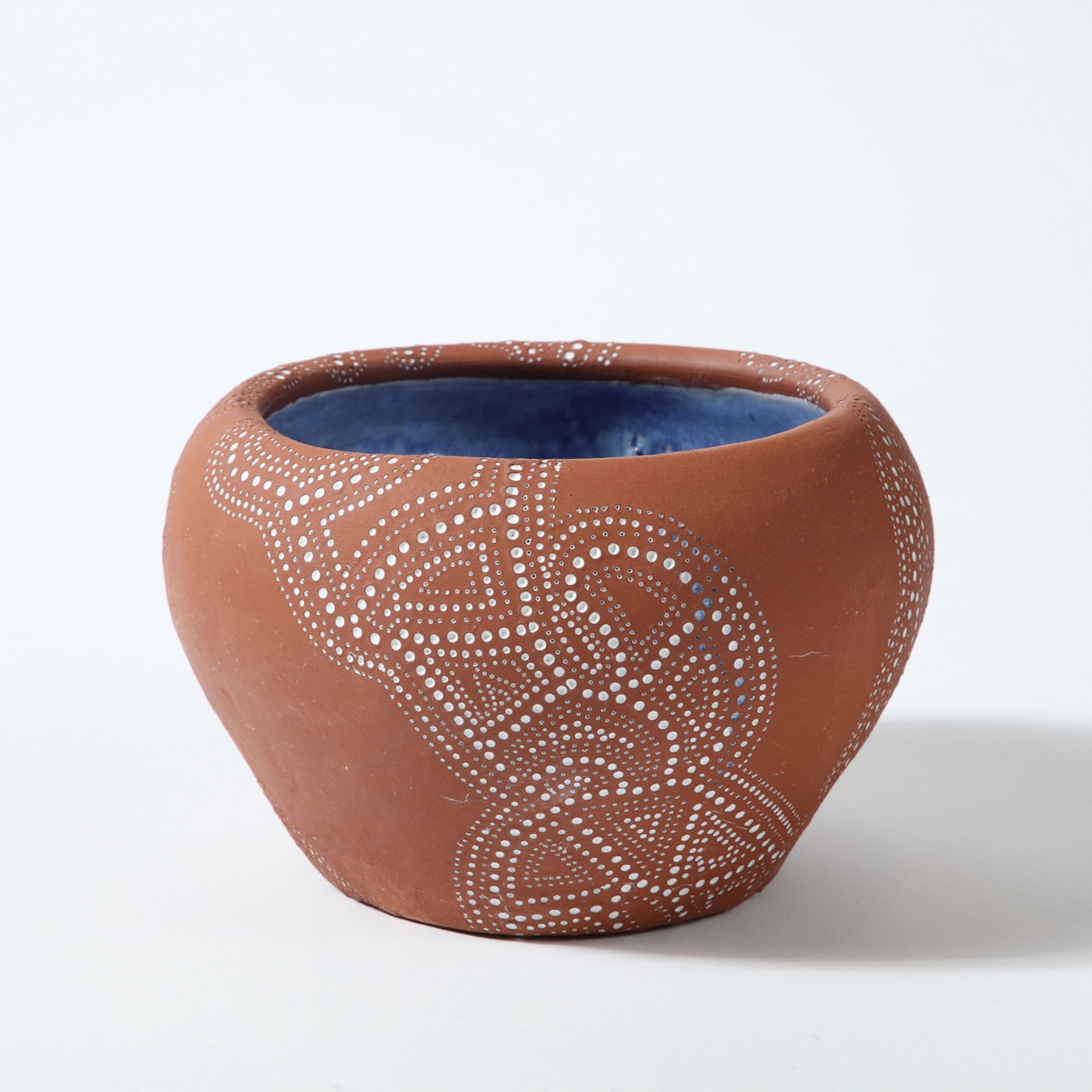
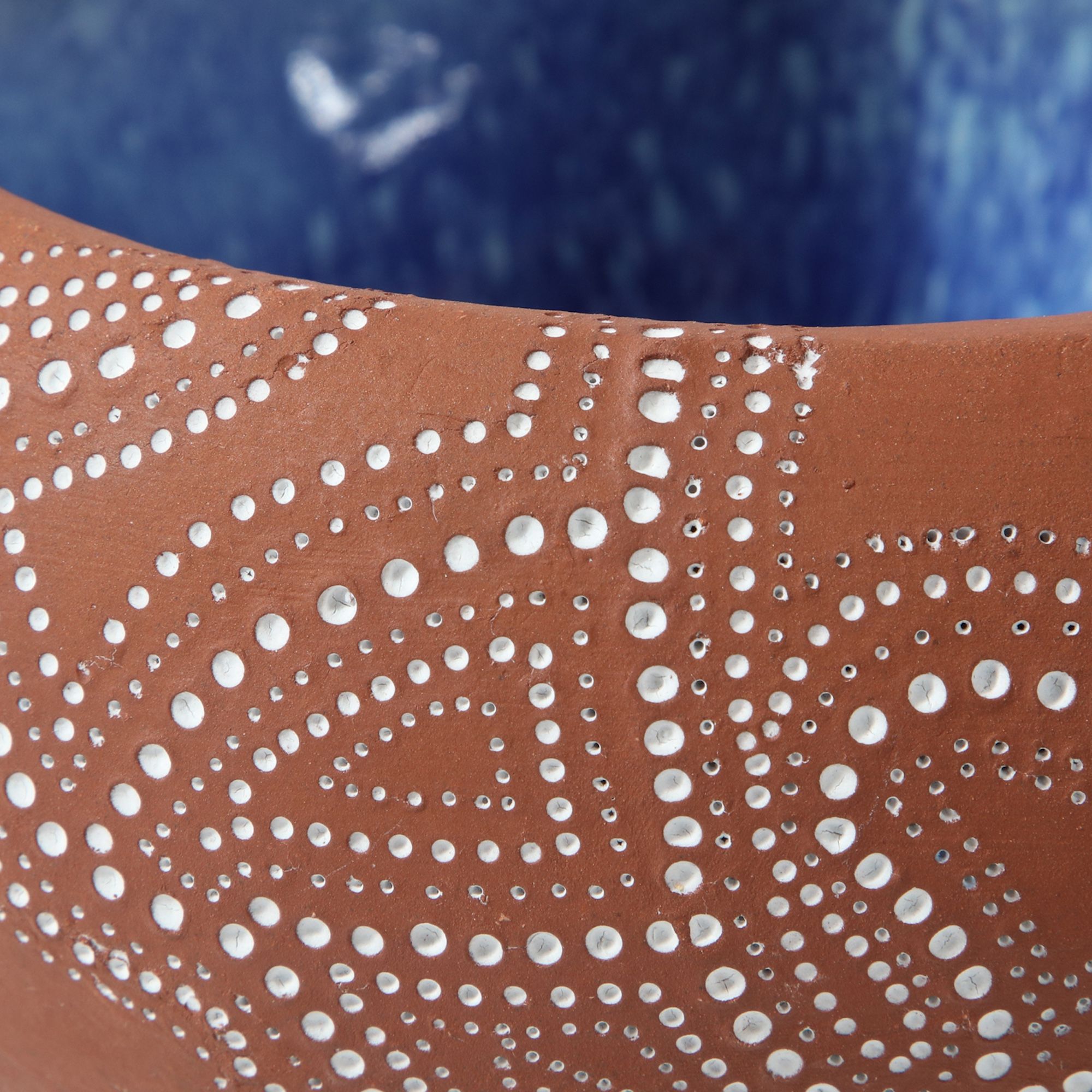
MALENE DJENABA BARNETT/ PORT ROYAL YABBA II, 2023, DEBUTING AT DESIGN MIAMI/ 2023
Photos courtesy of the artist and Wexler Gallery
AC/ If you had to choose one object—historical or contemporary—that demonstrates the storytelling power of design, which would it be and why?
MDB/Yabba pots from Jamaica! Recently, I completed a Fulbright as a visiting artist at Edna Manley School of Visual and Performing Arts in Kingston, Jamaica, where I researched African-Jamaican pottery traditions focused on the yabba pot, and made a new body of work.
Yabbas are widemouth terracotta vessels often overlooked because of their practical functionality and simplistic design. Still, they are among the few objects that survive as part of the African Caribbean material culture. During enslavement, women were allowed to work collectively to make and sell yabbas, which were used for cooking, storing food, and serving meals, and, for some, eventually bought their freedom.
After learning from her mother, Ma Lou, a celebrated African Jamaican potter, revived the art of making yabbas and became one of Jamaica's noted potters. Today yabbas are still being made and fired, primarily by men using the same hand-building technique Jamaicans call "African coil" and smoked fired in the same technique used in West African pottery. These pots held cultural memories and ancestors' experiences and were tools for liberation. From gathering this history, I created a series of yabba pots, collaborating with Jamaican potters to reimagine yabbas as coveted objects that recall memories from the past and inspire us to dream of the future.
The results are Yabba I, Yabba II, Yabba III, Port Royal Yabba I & II and Ayawa. I hand carved and embossed unique patterns on the exterior using the maps of Port Royal before and after the historic earthquake of 1692 that killed thousands. Amongst the casualties were the first groups of Akan potters enslaved in Port Royal. These pots pay homage to the Akans who decorated the yabba shards found after the first earthquake in Port Royal. The shards were the last few pieces of decorated pots that archaeologists can connect to West African pottery traditions. After this period, yabba had minimal, if any, pattern decoration.
Inside each Yabba is a rich blue glaze that pays homage to Cecil Baugh, a Jamaican master potter famous for his Egyptian blue glaze and indigo blue found in West African textiles. New narratives are essential to bringing awareness to overlooked historical objects to connect Black diasporic experiences.
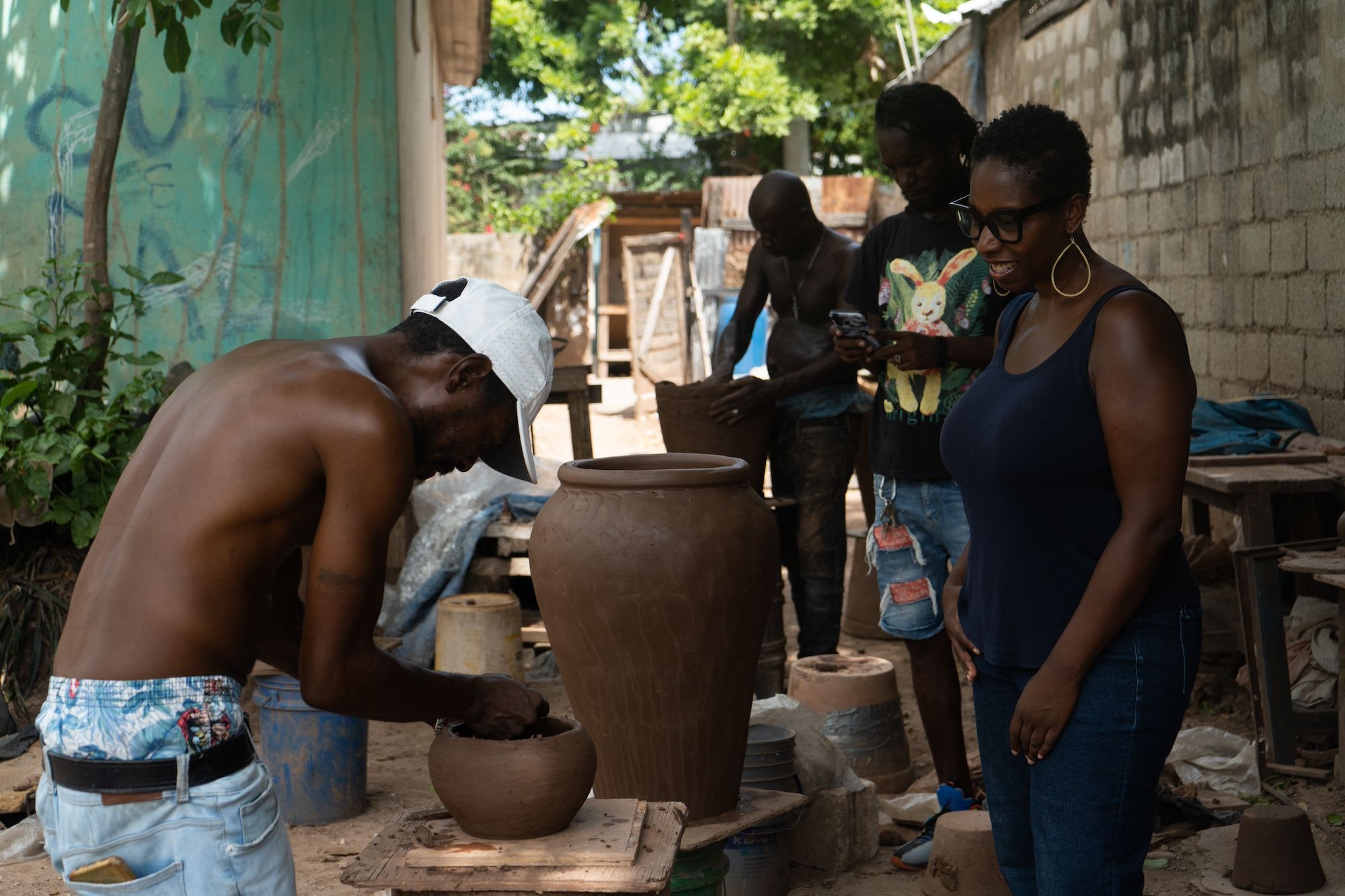
MALENE DJENABA BARNETT/ WORKING WITH POTTERS IN ROSE TOWN, JAMAICA
Photo courtesy of the artist and Wexler Gallery
AC/How can looking to our roots—heritage, community, the land beneath our feet—inform our way forward?
MDB/As a maker, my studio practice's core principle is looking at my roots, heritage, community, and the land. Many years ago, during my first visit to Ghana, West Africa, I learned the importance of connecting to my African heritage from the Akan people by learning about Sankofa, an adinkra symbol. This adinkra symbol means looking to the past to go forward, a beautiful reminder of limitlessness in storytelling.
In Memories of Home, a ceramic mural consisting of hundreds of terracotta tiles is grounded in the principles of Sankofa. The mural draws inspiration from my African Caribbean heritage and uses cultural memory to reconnect to mark-making in West African mud architecture. With a Pan-African approach to connect the Black diaspora, each pattern carved in Jamaican clay embodies the tradition of Nigerian Uli paintings, freehand, and intuitive pattern design, building on the legacy of surface pattern design from Black women. Each tile hand-pressed in an organic layout amplifies the traces of the hand in the process and beautifies the imperfection in each piece. The repetition is a visual illusion; no two pieces are alike, but in viewing the repetition, new memories are formed by always reaching to the past to embrace possibilities for the future.
Check out more Where We Stand interviews in Design Miami/ Forum Magazine.
This editorial series was conceived and curated by Anna Carnick and Wava Carpenter of Design Miami and Anava Projects as an exploration of the Design Miami/ 2023 curatorial theme Where We Stand.
About Where We Stand: Reflections on Place, Purpose & Community: Objects are anthropological markers of time and place. Through material, process, and form, every object tells a story—not only of the makers and societies responsible for their creation, but also of the human experience more broadly. Responding to the complexities that define our current timeline, Where We Stand explores the storytelling power of design and, in turn, its potential for nurturing connectivity. As we celebrate objects from around the globe inspired by place, identity, and heritage, we hope to prompt questions—and potential answers—to help us navigate this complex, polarized period in history: How do objects narrate human progress? And how can we harness the beauty and power of our most intimate, rooted bonds, individually and collectively, to realize a more perfect world to call our own?
Click here to purchase tickets to attend Design Miami/ 2023, located at Convention Center Drive & 19th Street in Miami Beach and open to the public December 6-10.
